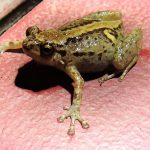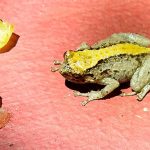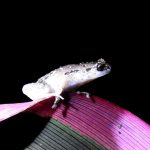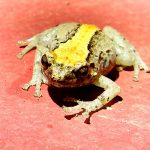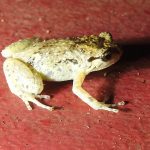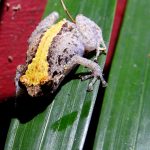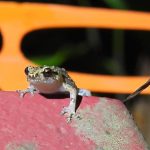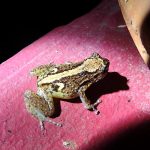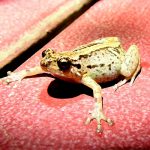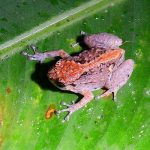NURSERY FROGS
Cophixalus
Imagine wandering through the lush, damp undergrowth of an Australian rainforest, where the air is thick with the scent of earth and the soft patter of rain echoes around you. It is here, hidden beneath the leaf litter and amongst the cool shadows, that you might encounter one of Australia’s lesser-known amphibians – the nursery frog.
Nursery frogs, belonging to the genus Cophixalus, are a fascinating group of small, terrestrial frogs found primarily in the rainforests of northern Queensland. Unlike many of their amphibian cousins, nursery frogs have adapted to life away from water bodies. They are known for their unique reproductive strategy, which gives them their common name.
In most frog species, eggs are laid in water, and tadpoles develop there. However, nursery frogs have taken a different path. The females lay their eggs on land, often in moist, hidden spots like under leaves or within the soft earth. Once laid, the male takes on the role of a diligent guardian. He stays close to the clutch, keeping a watchful eye to ensure the eggs remain safe from predators and environmental threats.
The real magic happens when the eggs hatch. Instead of emerging as aquatic tadpoles, the young frogs skip this stage entirely. They hatch as tiny, fully-formed froglets, ready to explore their leafy world. This remarkable adaptation allows nursery frogs to thrive in environments where standing water might be scarce or temporary.
Physically, nursery frogs are quite small, usually measuring just a few centimetres in length. Their colouring often blends seamlessly with their surroundings, providing excellent camouflage against the forest floor. This cryptic appearance, combined with their secretive habits, makes them a challenge to spot in the wild.
The nursery frog’s life is a testament to the incredible adaptability of nature. However, like many creatures that call the rainforest home, they face threats from habitat destruction and climate change. The preservation of their rainforest habitat is crucial for their survival and the countless other species that share their ecosystem.
By understanding and appreciating the unique lives of creatures like the nursery frog, we can foster a deeper connection to the natural world and inspire efforts to protect these vital habitats. As you wander through the rainforest, remember the hidden lives unfolding beneath your feet, each a small yet significant part of Australia’s rich tapestry of life.

